Deprecated: str_replace(): Passing null to parameter #3 ($subject) of type array|string is deprecated in /home/newsfqwf/kechambers/wp-includes/formatting.php on line 4268
]]>
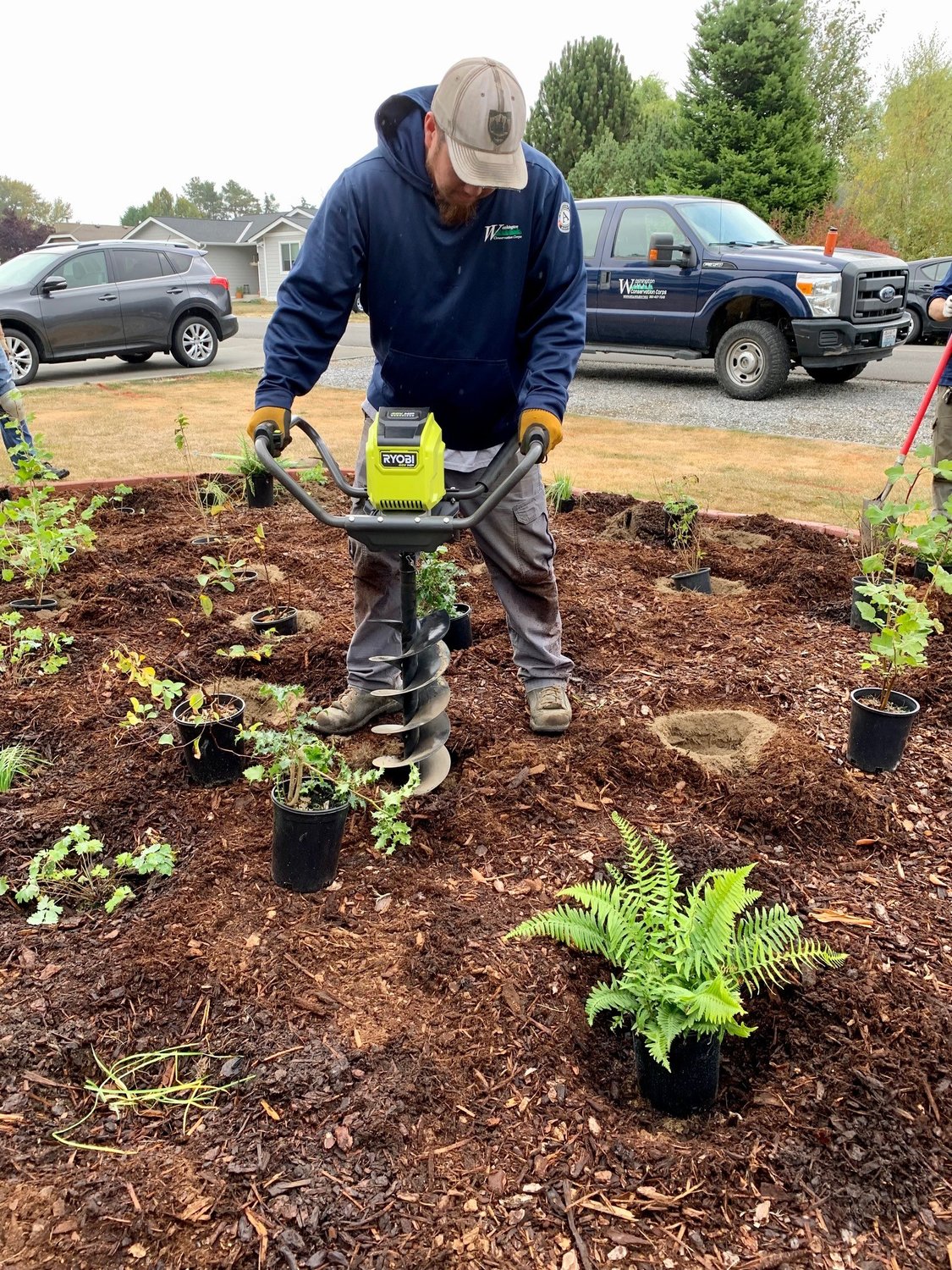 By Grace McCarthy Birch Bay homeowners will have a second opportunity to participate in Whatcom County’s free native landscaping program after the pilot program started last year. Birch Bay Watershed and Aquatic Resources Management District (BBWARM) and Whatcom Conservation District (WCD) started the program to reduce water runoff, save water and improve watershed habitat. The […]]]>
By Grace McCarthy Birch Bay homeowners will have a second opportunity to participate in Whatcom County’s free native landscaping program after the pilot program started last year. Birch Bay Watershed and Aquatic Resources Management District (BBWARM) and Whatcom Conservation District (WCD) started the program to reduce water runoff, save water and improve watershed habitat. The […]]]>
By Grace McCarthy
Birch Bay homeowners will have a second opportunity to participate in Whatcom County’s free native landscaping program after the pilot program started last year.
Birch Bay Watershed and Aquatic Resources Management District (BBWARM) and Whatcom Conservation District (WCD) started the program to reduce water runoff, save water and improve watershed habitat.
The pilot program helped homeowners with planning and permitting, and then program organizers provided mulch and plants to the homeowners during a planting work party on October 22. Five homes in total, between Birch Bay Village and Birch Bay View, were selected out of 30 property owners, said BBWARM program specialist Kate Rice. The program hopes to do 10 homes in 2023.
The program is looking for a cluster of properties within a walkable area, such as adjacent to one another or being within sight distance, Rice said. The properties should have 1,000-3,000 square feet of lawn that can be turned into native plant landscaping.
Native landscaping is low maintenance because it doesn’t require mowing, and needs minimal mulching and watering, Rice said, adding that native plants bring pollinators. Native plants have deeper roots than grass, so they soak up and filter more water, reducing pollution and runoff.
“It benefits the whole community but it also helps the landowner,” Rice said.
About 8,500 square feet of native landscaping were installed this year, something Rice says they want to more than double next year to around 20,000 square feet.
Participants for next year’s program will be selected in early 2023 and the planting installations will occur next fall. A neighborhood cluster is more likely to be selected for the program if several neighbors indicate they’re interested in participating.
“Right now, we’re really focused on getting people signed up and seeing what clusters we have forming in order to make decisions next year on what neighborhoods we’re going to choose,” Rice said. “If you’re interested, get signed up now because we will be making a decision in the next couple of months.”
Birch Bay homeowners who aren’t selected for 2023 will be reconsidered for the program in the future. For people who aren’t selected for the program, Rice encourages them to visit local plant nurseries and purchase native plants for their own projects. Whatcom Conservation District will hold its native plant sale Saturday, March 18 at Pioneer Park in Ferndale.
Rice said she anticipates the program continuing as long as there is funding and community interest.
“The pilot program went well,” Rice said. “Because we had a lot of interest this year, I would anticipate we will do the program the following year. As long as there are people interested, I anticipate we’ll keep it.”
Birch Bay homeowners who would like to participate in next year’s native landscaping program can visit bit.ly/3Xhwt6U. For more information, contact the Whatcom Conservation District project manager Ryan O’Connor at 360/306-4701 or roconnor@whatcomcd.org.
]]>Deprecated: str_replace(): Passing null to parameter #3 ($subject) of type array|string is deprecated in /home/newsfqwf/kechambers/wp-includes/formatting.php on line 4268
]]>
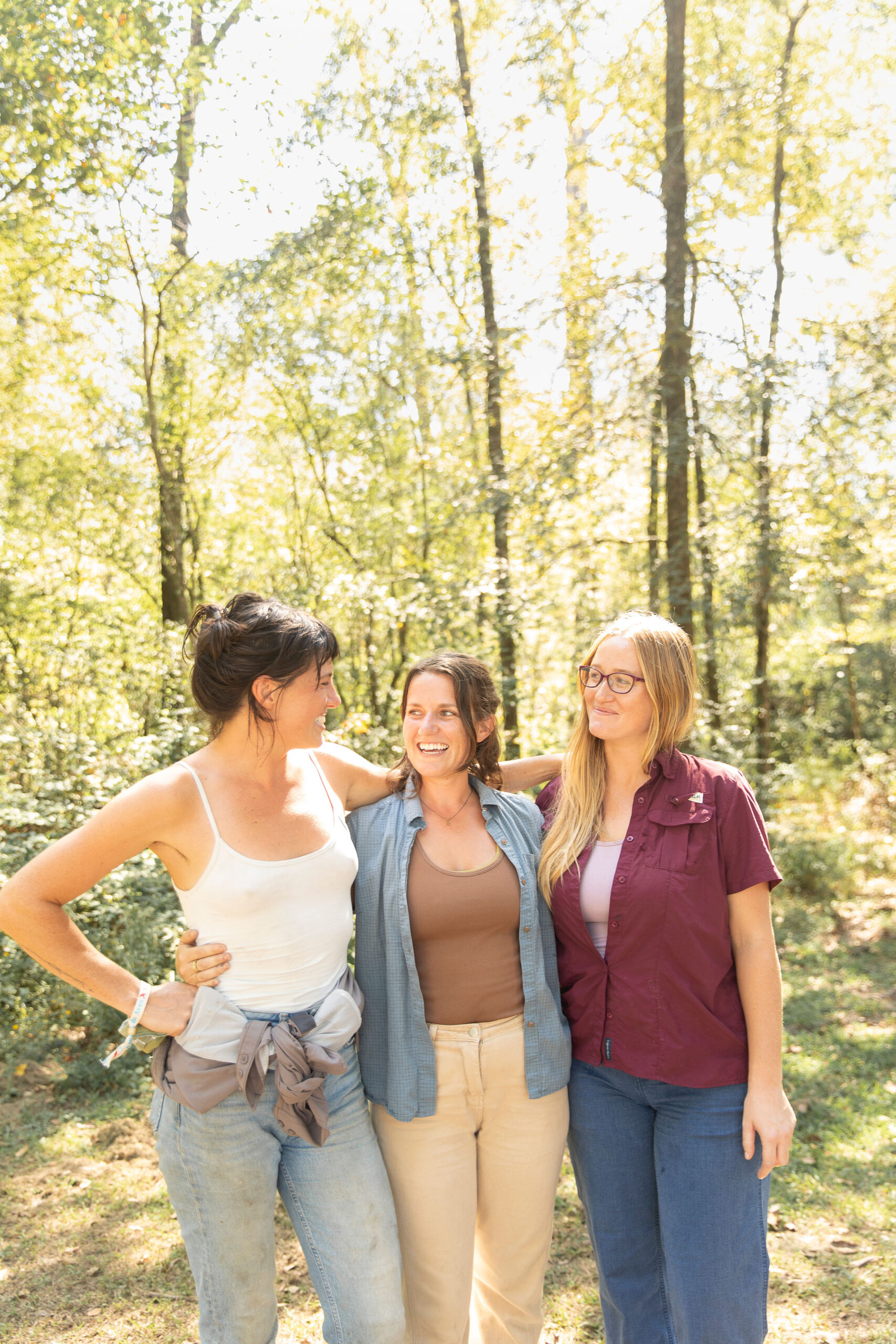 It seems like the responsible thing to do, creating the kind of manicured lawn and flowerbeds that could win a “yard of the month” award. But modern landscaping as we know it, awash in orderly designs and tidy plants, isn’t always great for soil health and biodiversity. A better approach, say the founders of the […]]]>
It seems like the responsible thing to do, creating the kind of manicured lawn and flowerbeds that could win a “yard of the month” award. But modern landscaping as we know it, awash in orderly designs and tidy plants, isn’t always great for soil health and biodiversity. A better approach, say the founders of the […]]]>
It seems like the responsible thing to do, creating the kind of manicured lawn and flowerbeds that could win a “yard of the month” award.
But modern landscaping as we know it, awash in orderly designs and tidy plants, isn’t always great for soil health and biodiversity. A better approach, say the founders of the south Louisiana company Swamp Fly, is to integrate native plants into residential and commercial landscapes to help improve sustainability and restore habitats for birds and insects.
“We strive to use mostly native plants, or mix in species that aren’t native, but don’t out-compete other plants,” says co-founder Caitlin Robbins, who, with business partners Ashley Brackeen and Emily Pontiff, launched the native landscape firm Swamp Fly last year.
Swamp Fly Landscapes founders Ashlee Brackeen, Emily Pontiff and Caitlin Robbins.
The company serves clients in both Baton Rouge and New Orleans, and focuses on regenerative commercial and residential landscaping.
“We don’t use chemical pesticides or herbicides,” Robbins says. “Everything we use is organic and will have minimal impact on the surrounding environment, because soil health and water quality are important to human health and the health of plants and animals.”
The idea for opening a full-service native landscaping business took root after Brackeen wanted to convert her traditional landscaping business into something more intentional. She pulled in friends Robbins and Pontiff, who were working in different fields, but shared their interests.
 American beautyberry (Callicarpa americana), one of the native plants in the LDWF Native Plant Garden, maintained by Swamp Fly Landscapes
American beautyberry (Callicarpa americana), one of the native plants in the LDWF Native Plant Garden, maintained by Swamp Fly Landscapes
The three began by working on a community garden project with Cindy Wonderful, a Baton Rouge activist and host of the WHYR radio show, Locals Only. While that project was delayed due to the pandemic, Robbins says, the three friends proceeded with a business idea, launching Swamp Fly in spring 2021.
The company provides consulting services and full-service design and installation. It’s part of a growing “kill your lawn before it kills you” movement across the country, in which the return to low-impact landscaping is seen as a healthy move for both plants and people.
Native landscaping addresses the loss of “living landscapes” at the hand of urbanization, according to the National Audubon Society. About 150 million acres of habitat and farmland have yielded to urban sprawl, and the trend shows no sign of slowing down, according to the organization, which further states that “the modern obsession with highly manicured ‘perfect’ lawns alone has created a green, monoculture carpet across the country that covers over 40 million acres.”
Swamp Fly will soon be featured on the new Kill Your Lawn Project series in production by Joey Santore, host of the YouTube channel Crime Pays, but Botany Doesn’t. The documentary will follow Santore as he explores so-called kill your lawn projects across the country, including one in New Orleans in which Swamp Fly created a new, sustainable design, Robbins says.
A growing number of homeowners are aware of the concern, and are looking for original designs with purposeful outcomes, Robbins says.
“One of the main motivations for people to use native plants in their landscapes is because they are realizing more and more how detrimental it is to use plants that outcompete local plants,” she says, “and plants that don’t benefit our local wildlife as much as native plants do.”
Swamp Fly’s projects have ranged from small garden clean-ups for clients to removing and replanting entire lawns with native growers and elements like soft pathways and frog ponds. Native plants attract insects, which in turn attract native and migratory birds and other wildlife. They also require less water and fewer fertilizers to thrive.
 LDWF Native Plants Garden, Maintained by Swampfly Landscapes
LDWF Native Plants Garden, Maintained by Swampfly Landscapes
Ripping out sod and shrubs isn’t practical for everyone, Robbins acknowledges. But she says even a partial commitment to native plants is a good thing. Some clients want to maintain a traditional look, but also might add a butterfly garden filled with Louisiana wildflowers that attract pollinators.
Robbins, who does most of the design work for Baton Rouge clients, says she and her two colleagues pull from a long list of native plants like purple, yellow or gray coneflower, rattlesnake master, various salvias, as well as numerous species of trees and shrubs to create their designs.
 LDWF Native Plants Garden, Maintained by Swamp Fly Landscapes
LDWF Native Plants Garden, Maintained by Swamp Fly Landscapes
Along with its residential work, Swamp Fly also maintains the Louisiana Department of Wildlife and Fisheries’ Louisiana Native Plant Garden at its Baton Rouge headquarters on Quail Drive. The quarter-acre garden holds 160 native plant species sectioned into mini-gardens that resemble individual Louisiana habitats. Swamp Fly was recently brought in to manage overgrown beds and improve trails that visitors use to explore it. Come see for yourself—the garden is free and open to the public.
Deprecated: str_replace(): Passing null to parameter #3 ($subject) of type array|string is deprecated in /home/newsfqwf/kechambers/wp-includes/formatting.php on line 4268
]]>
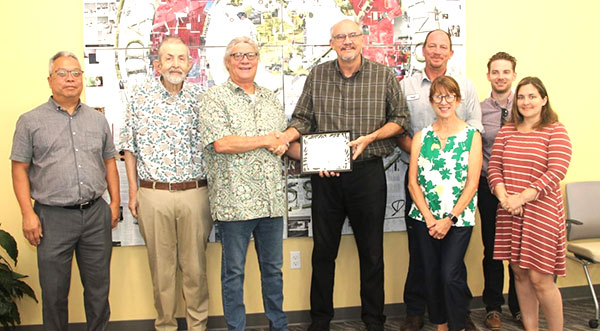 Diamond Gems Award is the highest category of Gems awards The Folliard Alumni Center at Florida Tech, already honored for its zero-energy design inside, has been recognized for its outside where native landscaping and a host of eco-friendly practices are creating a sustainable and lagoon-friendly Florida oasis. (Florida Tech image) BREVARD COUNTY • MELBOURNE, FLORIDA […]]]>
Diamond Gems Award is the highest category of Gems awards The Folliard Alumni Center at Florida Tech, already honored for its zero-energy design inside, has been recognized for its outside where native landscaping and a host of eco-friendly practices are creating a sustainable and lagoon-friendly Florida oasis. (Florida Tech image) BREVARD COUNTY • MELBOURNE, FLORIDA […]]]>
Diamond Gems Award is the highest category of Gems awards
The Folliard Alumni Center at Florida Tech, already honored for its zero-energy design inside, has been recognized for its outside where native landscaping and a host of eco-friendly practices are creating a sustainable and lagoon-friendly Florida oasis. (Florida Tech image)
BREVARD COUNTY • MELBOURNE, FLORIDA – The Folliard Alumni Center at Florida Tech, already honored for its zero-energy design inside, has been recognized for its outside where native landscaping and a host of eco-friendly practices are creating a sustainable and lagoon-friendly Florida oasis.
The City of Melbourne and its Beautification and Energy Efficiency Board visited the Center in late September to present the city’s Diamond Gems Award.
Accepting were Ken Lindeman, professor and director of Florida Tech’s sustainability program, and Troy Nguyen, associate professor and a leader of the zero-energy efforts that made the building the most efficient on campus.
“The landscape now features 20 species of native Florida trees, shrubs, and ground cover, all installed by the grounds crew and sustainability program students during the pandemic,” Lindeman said.
The native species were purchased with a Collins Aerospace Community Grant. They include Jamaican Caper, Live Oak, Gumbo Limbo, Swamp Dogwood, and Sunshine Mimosa.
There is no sprinkler system outdoors and no pesticides are used. Two pollinator gardens were created. When needed, only slow-release fertilizer is used during allowed months.
In a short presentation, Lindeman acknowledged the groups, people, and organizations who helped make the Diamond Gems Award possible:
■ Collins Aerospace Community Grants and the Florida Tech Development Office
■ City of Melbourne and BEEB
■ Florida Tech grounds crew and facilities operations
■ Alumni Center Staff and Dr. Nguyen’s team
■ Maple Street Natives—NatScape, which provided landscape design
■ Florida Tech students, including those in the sustainability program
 With the clean energy award and now the Gems recognition, “Florida Tech Is doing all the right things to be a leader in the community on sustainability and is a beacon for our community here,” said Randall Parkinson, a research associate professor at FIU and chairman of BEEB. (Florida Tech image)
With the clean energy award and now the Gems recognition, “Florida Tech Is doing all the right things to be a leader in the community on sustainability and is a beacon for our community here,” said Randall Parkinson, a research associate professor at FIU and chairman of BEEB. (Florida Tech image)
With the clean energy award and now the Gems recognition, “Florida Tech Is doing all the right things to be a leader in the community on sustainability and is a beacon for our community here,” said Randall Parkinson, a research associate professor at FIU and chairman of BEEB.
The Gems award, developed by Todd Cook in the Melbourne Parks Maintenance Department, was first given last year to the Florida Native Plant Society, Conradina Chapter, for Lagoon Park.
The Diamond Gems Award is the highest category of Gems awards, with Emerald as the base award and Sapphire a step above.
For each, at least three criteria must be met. So the Center achieved nine criteria across the three categories, including the use of Florida native plants, having gutters drain onto pervious surfaces (the gutter drains underground), and using organic mulch.
“The Diamond Award, that’s the heavy lift,” Parkinson said. “You’ve done basically everything that is important.”
CLICK HERE FOR BREVARD COUNTY NEWS

Deprecated: str_replace(): Passing null to parameter #3 ($subject) of type array|string is deprecated in /home/newsfqwf/kechambers/wp-includes/formatting.php on line 4268
]]>
 “Californians know that we’re facing extreme drought. We know this is bigger than any emergency drought restriction. We’re changing our lifestyles and homes, and it starts with what we pot and plan in our living spaces,” said Mohr. “We’re committed to changing our water habits across the board—not just with shorter showers and capturing gray […]]]>
“Californians know that we’re facing extreme drought. We know this is bigger than any emergency drought restriction. We’re changing our lifestyles and homes, and it starts with what we pot and plan in our living spaces,” said Mohr. “We’re committed to changing our water habits across the board—not just with shorter showers and capturing gray […]]]>
“Californians know that we’re facing extreme drought. We know this is bigger than any emergency drought restriction. We’re changing our lifestyles and homes, and it starts with what we pot and plan in our living spaces,” said Mohr. “We’re committed to changing our water habits across the board—not just with shorter showers and capturing gray water—but with completely reimagined landscaping that features native drought-resistant California plants.”
Set on historic Crenshaw Blvd., the Save Our Water Zen Garden will be open all day Saturday near the 94.7 The WAVE music stage. It was created for residents to engage in its high-quality designs and inspire their own use of California native plants back home in their gardens.
Thanks to our partners, ScottsMiracle-Gro and Bonnie Plantsthe Save Our Water Zen Garden shows a beautifully designed water wise space.
Visitors learned about water conservation, drought-tolerant plants and native landscaping, and were encouraged to pledge to cut their water usage by 15%. Visitors won raffle prizes of native plants, water-wise seed packs and new lawn chairs.
gov. Gavin Newsom last month wrote that without action, state officials believe extreme weather could diminish California’s water supply by up to 10% by 2040. “Californians have repeatedly answered the call to use less water in past droughts. As the state prepares for the possibility of a fourth dry year and potential weather extremes, it’s more important than ever that all of us adopt water conservation as a way of life,” he wrote.
For more water-saving tips and resources, including California For native landscaping ideas, visit SaveOurWater.com.
About Save Our Water (SOW): Save Our Water is California’s statewide water conservation program. Started in 2009 by the California Department of Water Resources, Save Our Water’s goal is to make water conservation a daily habit among Californians. The program reaches millions of Californians each year through partnerships with local water agencies and other community-based organizations, social marketing efforts, paid and earned media and event sponsorships. Please visit SaveOurWater.com and follow @saveourwater on Twitter and Instagram and @SaveOurWaterCA on Facebook.
Contact: Phyllis Tucker
P: (310) 293-0286
SOURCE Save Our Water
]]>Deprecated: str_replace(): Passing null to parameter #3 ($subject) of type array|string is deprecated in /home/newsfqwf/kechambers/wp-includes/formatting.php on line 4268
]]>
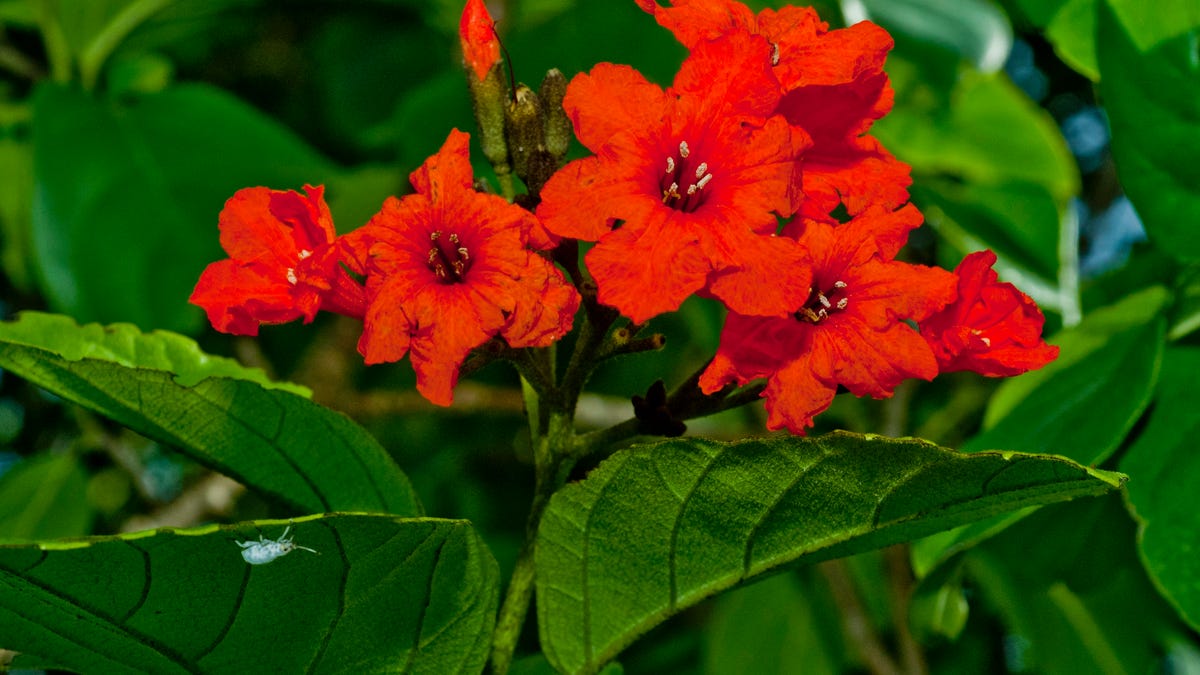 By Maria Sonnenberg | For FLORIDA TODAY Rebecca Heidenreich and Jamie Snider represent a new generation of gardeners eager to go native with their plants. The two young mothers will open their native plant gardens to the visitors of the 13th Annual Landscaping with Florida Natives Tour hosted by the local Conradina Chapter of the […]]]>
By Maria Sonnenberg | For FLORIDA TODAY Rebecca Heidenreich and Jamie Snider represent a new generation of gardeners eager to go native with their plants. The two young mothers will open their native plant gardens to the visitors of the 13th Annual Landscaping with Florida Natives Tour hosted by the local Conradina Chapter of the […]]]>
| For FLORIDA TODAY
Rebecca Heidenreich and Jamie Snider represent a new generation of gardeners eager to go native with their plants.
The two young mothers will open their native plant gardens to the visitors of the 13th Annual Landscaping with Florida Natives Tour hosted by the local Conradina Chapter of the Florida Native Plant Society.
“We’re very excited about the two young ladies on the tour that are getting involved in native plants for their children and the environment,” said chapter spokesperson Jane Higgins.
Ticket holders can tour the featured locations at their own pace from 9 am to 3 pm, Saturday, Oct. 15
This year’s tour features six homes, a large commercial space, one public space, and one Brevard County Environmentally Endangered Lands site for visitor to learn what homeowners and public spaces have done using native plants in different situations.
Native plants are important to preserve our wildlife, pollinators and local heritage as well as requiring much less maintenance, water, and fertilizer, which benefits our local environment and the Indian River Lagoon.
“My grandmother instilled a love of backyard gardening at a very young age,” said Heidenreich.
“I got into Florida native gardening when I took a local herbalism course and the teacher, a fifth generation Florida girl, highly encouraged native plants,” she said.
“It pains me so much when we source plants from outside countries to replace the native ones that are beautiful and functional and wonderful in their own right! So here I am, three years, 140-plus native species later, loving it more every day .I absolutely love all the life it brings to my yard!”
Snider, born and raised in Palm Bay, never gave native plants much thought while growing up. A Marine for five years, she spent the following 15 as a Marine spouse, living in barracks, base housing or rentals where gardening wasn’t much of a prospect.
“I tried some container veggie gardening and failed miserably every time,” she said.
When Snider and her family returned home to family in Palm Bay, she was not thrilled with the shrubs and invasive queen palms in her yard, and ripped pretty much everything out, replacing them with pretty plants found at any nursery.
“What I didn’t know when I started planting was that the pretty-to-me plants weren’t really going to do anything for the butterflies that I wanted to attract to my yard,” she said.
Snider began researching native plants, and after another garden program, went almost 100 percent native.
Like potato chips, native plants can be addictive, as Snider acknowledges.
“I am addicted to host plants – food for caterpillars to transition to butterflies,” she said.
“I have plants to feed and provide shelter to the birds. I have flowering plants that provide nectar or pollen to the various pollinators. I chip away at the yard a little at a time creating as much habitat as will fit in my yard but still have space for the kids to play.”
With the inspiration and information garnered through a native plant tour, gardeners can follow Heidenreich and Snider’s example and soon be playing among the butterflies and birds, whatever the gardener’s age.
Purchase tickets on Eventbrite at 2022 Landscaping with Florida Natives Tour Tickets, Sat, Oct 15, 2022 at 9:00 AM | Eventbrite. Tour brochure and plant lists will be emailed within 24 to 48 hours.
]]>Deprecated: str_replace(): Passing null to parameter #3 ($subject) of type array|string is deprecated in /home/newsfqwf/kechambers/wp-includes/formatting.php on line 4268
]]>
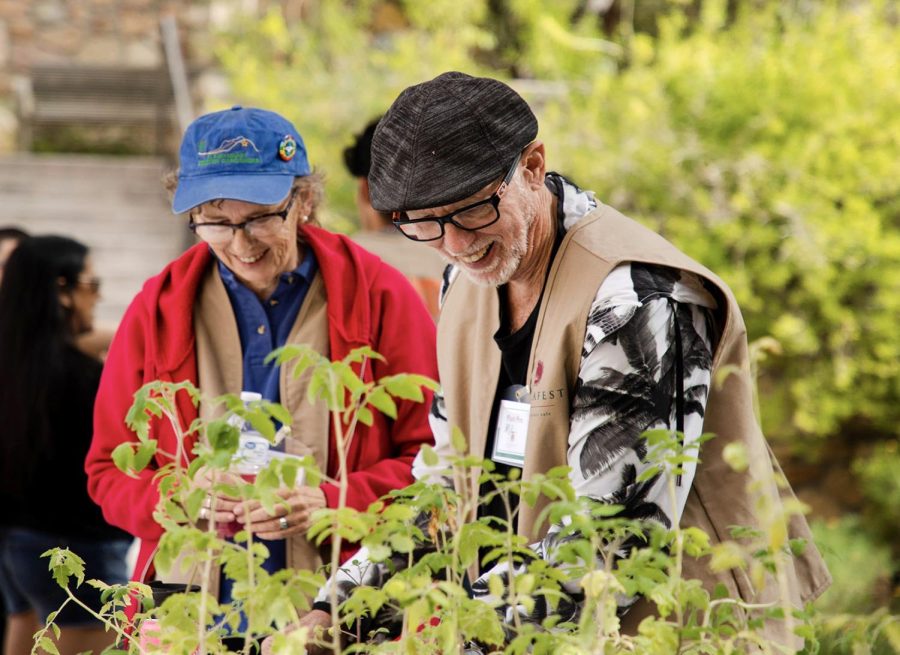 Jasmine Campoya The Centennial Museum and Chihuahuan Desert Gardens hosted their Fall FloraFest, Oct. 1. When it comes to preserving the land and native plants from across the El Paso region, UTEP helps lead in this environmental mission by providing faculty, students and the general public with access to the indigenous greens of the area. […]]]>
Jasmine Campoya The Centennial Museum and Chihuahuan Desert Gardens hosted their Fall FloraFest, Oct. 1. When it comes to preserving the land and native plants from across the El Paso region, UTEP helps lead in this environmental mission by providing faculty, students and the general public with access to the indigenous greens of the area. […]]]>
Jasmine Campoya
The Centennial Museum and Chihuahuan Desert Gardens hosted their Fall FloraFest, Oct. 1.
When it comes to preserving the land and native plants from across the El Paso region, UTEP helps lead in this environmental mission by providing faculty, students and the general public with access to the indigenous greens of the area. This year, FloraFest happened Oct. 1 at the Undergraduate Learning Center and had a full turnout.
The UGLC was stocked full of trees, groundcovers, vegetables, grasses, cacti and an assortment of other local plants for people to choose from. Shoppers came prepared with carts to hold the produce they expected to purchase and had dozens of volunteers that could assist them in finding exactly what they were looking for.
There were two categories of plants available for the public’s choosing, native or adapted species. Master gardeners, horticulturalists, even students and staff were there to help explain the differences and care processes for everything at the market.
There were signs lining the rows of plants that also gave detailed descriptions of what each section was and what they required.
FloraFest serves two primary purposes for UTEP and El Paso, to fundraise for the campus gardens and promote a healthier environment in the city.
“Part of the Garden’s mission is to not only show off the amazing plants that grow here in the Chihuahuan Desert, but then this sale enables people to plant them in their yards,” said Daniel Carey-Whalen, director of the UTEP Centennial Museum and Chihuahuan Desert Gardens. “A part of our mission is environmental sustainability, wanting people to make the shift away from nonnative plants, from grass, and to zero scape their yard with native and adapted plants.”
This type of gardening not only facilitates creating a better local environment but can also save people money when it comes to managing their yards and their landscaping.
“(People) are going to save on their water bill and (the plants) are beautiful. There’s so many wonderful flowering plants that attract native insects, so native pollinators. It’s just healthier for the environment,” Carey-Whalen said.
The fundraising aspect of the event helps UTEP maintain its own native gardens and landscaping. The money it makes also funds the workers who are hired to keep the grounds and pay for anything that needs to be fixed within the gardens.
People from all over the city bought plants from the festival to fill their homes or landscape their yards in a more ecofriendly manner. Some people attending not only appreciated all the plants the event had to offer, but also how informative the experience was for the community.
“It’s nice that they have a few booths in the back to give you information about seeds and a lot of native plants and the research they do. I think that’s fun,” said Esther Alarcón, chemistry Ph.D.
While FloraFest was only open for one day during the Fall 2022 semester, UTEP’s Chihuahuan Desert Gardens plan on hosting another FloraFest in the Spring 2023 semester. The dates are not set yet, but for more information visit utep.edu/centennial-museum/
Meagan Garcia is the arts & culture editor and may be reached at [email protected].
]]>Deprecated: str_replace(): Passing null to parameter #3 ($subject) of type array|string is deprecated in /home/newsfqwf/kechambers/wp-includes/formatting.php on line 4268
]]>
HJ Carroll Park
Gravel parking area at south side of park
Chimacum, WA
Event date
Wednesday, September 28, 2022
Event time
4:00PM – 5:30PM
Cost / donation
Free, but pre-registration is required.
Contact
joe holtrop,
info@jeffersoncd.org
360-385-4105
site
Jefferson County Conservation District manager Joe Holtrop will lead a hands-on landscaping with native plants workshop. The workshop will be focused on native plant identification, home landscaping attributes, wildlife benefits, and other characteristics. The workshop involves about one mile of easy walking at HJ Carroll Park in Chimacum. The workshop is limited to 2o participants and pre-registration is required.
Event date
Wednesday, September 28, 2022
Event time
4:00PM – 5:30PM
Cost / donation
Free, but pre-registration is required.
Contact
joe holtrop,
info@jeffersoncd.org
360-385-4105
site
http://www.jefferson
cd.org/news-events/
Deprecated: str_replace(): Passing null to parameter #3 ($subject) of type array|string is deprecated in /home/newsfqwf/kechambers/wp-includes/formatting.php on line 4268
]]>
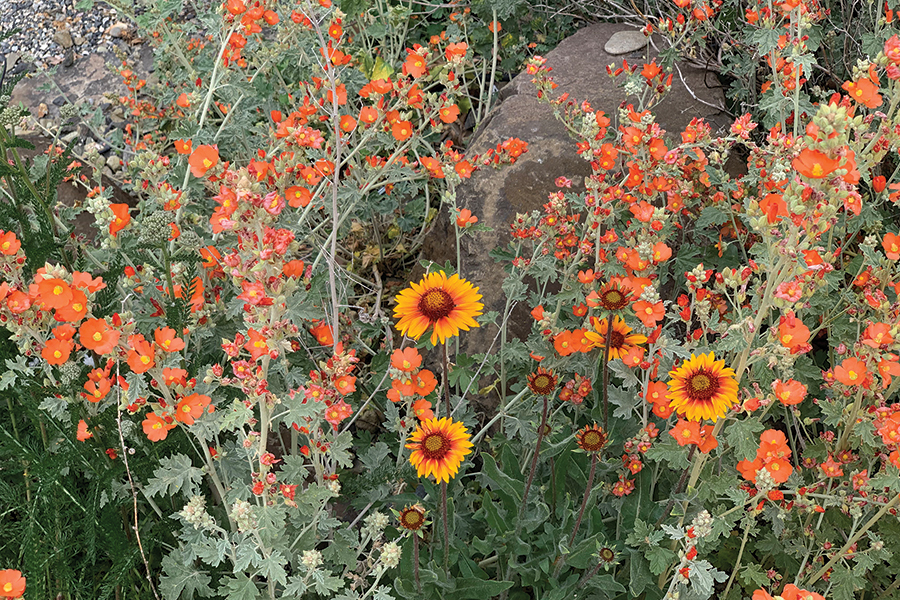 Tucked into a pocket of West Richland is a native plant haven.It’s a nursery in Ann Autrey’s backyard called Tapteal Native Plants. Her business is a grassroots effort to raise awareness about the value of native species, as well as to supply the Columbia Basin with region-specific varieties from its unique shrub-steppe habitat. Demand for […]]]>
Tucked into a pocket of West Richland is a native plant haven.It’s a nursery in Ann Autrey’s backyard called Tapteal Native Plants. Her business is a grassroots effort to raise awareness about the value of native species, as well as to supply the Columbia Basin with region-specific varieties from its unique shrub-steppe habitat. Demand for […]]]>
Tucked into a pocket of West Richland is a native plant haven.
It’s a nursery in Ann Autrey’s backyard called Tapteal Native Plants.
Her business is a grassroots effort to raise awareness about the value of native species, as well as to supply the Columbia Basin with region-specific varieties from its unique shrub-steppe habitat.
Demand for native plants is on the rise.
“Every year, the business has tripled in growth for plant sales,” Autrey said. “Last year, we hit our highest yet, and (this year) we’re at least going to match.”
She’s seeing the growth in Tapteal’s customer base.
“We’re definitely reaching more and more people. When we had our sale in spring, it was all new faces,” she said.
Autrey and her assistant, Kelsey Kelmel, said there are several reasons people are attracted to native plants, ranging from a desire to honor the landscape, reduce maintenance, add diversity to edible landscaping, lower water bills or guard against future environmental conditions that may make conventional plantings less practical or even impossible.
“Having done this for a few years, I can tell you that when it comes to native plant people, there’s no one type of person,” Autrey said. “Our customers span the whole political spectrum … and every other category.”
“Plants don’t discriminate,” Kelmel added.
“Our customer base comes from as far as Yakima, Moses Lake, a strong contingent in Walla Walla, Pendleton, Umatilla,” Autrey said.
Shrub-steppe diversity
The area’s shrub-steppe landscape boasts an astonishing array of native wildflowers and other less showy plants.
“Our ecosystem is one of the most diverse in the world,” Kelmel said.
Yet, as Tri-Cities and other neighboring communities grow and diversify, many property owners don’t embrace the natural character of the existing environment, instead favoring green lawns and conventional landscape plantings—both which require lots of water.
To Autrey and Kelmel, native plants and other arid climate-tolerant species provide a simple yet elegant solution to the challenges presented by the shrub-steppe environment.
After all, they’ve naturally adapted to these conditions. The bonus? They require nearly no water, soil amendment, or pesticides and herbicides.
“Water conservation, sustainability and resilience for what’s coming for the future and pollinator health – that’s especially important here in Eastern Washington because we’re in ag country and we need to support all the pollinators we can to ensure our ag industry continues in good health ,” Autrey said.
It’s part of what led her to start Tapteal Native Plants five years ago after wanting to incorporate native plantings on her own property. She found herself driving between two native plant nurseries in Spokane and Peshastin to find what she was looking for.
Blanket flowers and globemallow are just a few examples of the colorful native flower varieties available through Tapteal Native Plants. (Photo by Kelsey Kelmel)
“It dawned on me that not everyone can take a day to go get plants and then again to replenish anything that didn’t make it,” she said, adding that the Columbia Basin has a slightly different climate than those two areas.
Adding to the challenge is transplants from the wild often don’t take well due to the long roots that shrub-steppe species put down to access water reserves.
“So, I focused on collecting and germinating local seed that has the genetics to make it here,” she said.
She said members of the Heritage Garden Program helped her out, particularly with seed donations. She also learned about different areas around the region to harvest seeds sustainably.
Though Autrey believes it doesn’t have to be all or nothing when it comes to incorporating native plantings, saying “there is value in the plants themselves because all around us we’re losing the valuable shrub-steppe habitat.
“For example, on the Hanford reservation, there used to be sagebrush everywhere, but due to fires, it’s really decimated the population. Slow-growing sagebrush doesn’t come back after a fire…it’s a keystone species. When we lose those plants, it disrupts the whole ecosystem.”
In “Singing Grass, Burning Sage” by Jack Nisbet, he wrote that of “the 10.5 million acres of shrub-steppe habitat present in Eastern Washington in the early 1800s, almost two-thirds have disappeared entirely and the rest has been irrevocably changed. ”
As Autrey explained, that change is due to human influence.
“Planting natives shows an appreciation for where we’re at,” Kelmel said. “I think that celebrating that should be a part of our daily lives and our community. Why not celebrate our sense of place? There are a lot of lessons that can be learned from the shrub-steppe.”
Plant sale, classes
Tapteal Native Plants is gearing up for its annual fall plant sale, which runs from 10 am to 2 pm Oct. 28-29 and Nov. 4-5.
Sales are also held in spring with a different selection of plants.
“Our sales are focused around the life cycle of the plant,” Autrey said. “People are used to planting what they want right now, but really, most native plant starts are best planted in fall. We want people to be successful. Their traditional way of gardening may not be what’s going to be successful for the plant.”
Plants and seeds can be acquired throughout the year by contacting the nursery or visiting its limited Etsy shop, which is devoted to seed sales.
Autrey offers her expertise through consultation as well. Homeowners and businesses can have their property evaluated. Then, she can create a plan, complete with plant species recommendations.
She has designed over 200 native gardens to date.
For those looking to learn more, Tapteal Native Plants’ website offers guides, articles and resources to help people get started.
This fall, Autrey also will be hosting her first seed germination class and hopes to offer it again in the spring, as well as garden tours.
Tapteal Native Plants: 509-578-6446, taptealnativeplants.com. Open by appointment only. Follow on Facebook and Instagram for fall and spring plant sale information.
]]>Deprecated: str_replace(): Passing null to parameter #3 ($subject) of type array|string is deprecated in /home/newsfqwf/kechambers/wp-includes/formatting.php on line 4268
]]>
The term “native landscaping” has been in the conversation for decades. I have been in the industry for 35 years and have seen a slow evolution into making the practice of using natives in your landscape a successful reality. When I say slow, I mean SLOW! I have worked with different nurseries, landscapers, extension offices, etc. for the last 25 years promoting the use of native plants in landscaping and teaching homeowners how to successfully use natives to replace their sprinkler-loving lawns (or at least a portion of them ). It has been a rough road, but over the past 5 years, I have seen amazing progress.
Success of using native plants in the landscape depends on a few things. The first is choosing the right plant for the right place. Just because a plant grows wild in Idaho does not mean it will be low maintenance and low water use in your landscape. Choosing a plant that naturally grows near a stream in dense shade to plant in a fully exposed backyard will not save you water and the plant will most certainly not thrive. Conversely, using a plant that naturally grows in a well-drained soil in full sun will not succeed on the north side of your house under your gutter downspout. Choosing the correct specimen for your microsite is of the utmost importance.
The other main problem I have seen over the years is overwatering. Homeowners plan native plants to save water and then leave their existing irrigation system set to water turf. This is a great way to make the plants either take over your landscape with uncontrollable growth, or rapidly waste away due to root rot from overwatering.
The other barrier that has slowed the popularity of low water use native landscapes is public perception of what a properly cared for landscape should look like. This perception has been the largest barrier of a low water use landscape movement. Native landscaping, or a more informal, natural look to the landscape can be frowned upon by neighbors. This is due to the perception that a typical landscape should be a bright green, shortly mown turf surrounded by formally pruned ornamental shrubs and annual flower beds. I am happy to say this perception is shifting and has changed exponentially the past few years.
In the past, most of the plants that our nursery produces have gone to restoration of natural areas after a disturbance. Native plants used for landscaping were a small part of our business. The tides are shifting, and we are growing a much larger portion of native trees, shrubs, wildflowers and grasses for home and commercial landscapes. We still have a lot to learn, but the learning curve is flattening and I am excited to see success.
I am often asked for a list of my favorite landscape natives. Here is my short list. My favorite tree is Western larch. I love Saskatoon serviceberry shrubs and my favorite wildflower is blanketflower. These may not work for your situation, so do your research and find out what native plant will work in your site and save our precious water supply.
]]>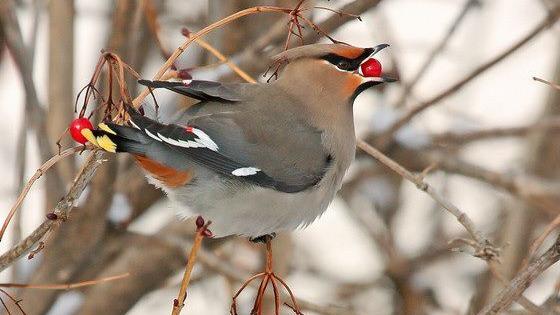 These colorful plant lists can be downloaded from the DNR Native Plants website. If you subscribe to the magazine now by February 1, 2021, the instructions will be delivered directly to your mailbox. You can also find other great features there, like winter hiking recommendations and snowshoeing trails. The annual publication of Field Notes is […]]]>
These colorful plant lists can be downloaded from the DNR Native Plants website. If you subscribe to the magazine now by February 1, 2021, the instructions will be delivered directly to your mailbox. You can also find other great features there, like winter hiking recommendations and snowshoeing trails. The annual publication of Field Notes is […]]]>
These colorful plant lists can be downloaded from the DNR Native Plants website. If you subscribe to the magazine now by February 1, 2021, the instructions will be delivered directly to your mailbox. You can also find other great features there, like winter hiking recommendations and snowshoeing trails.
The annual publication of Field Notes is also included in the winter edition. It’s packed with short stories and photos from DNR Natural Heritage Conservation staff, partners and volunteers who protect endangered species and state natural areas.
Native plants that evolved in Wisconsin have a far greater ability to fuel life in the food chain than non-native plants such as ornamental trees and flowers that are common in many courtyards. This is because native plants have evolved along with the insects that eat them, and the insects are better able to digest the native plants.
It is particularly important to offer the birds more natural habitat. A landmark 2019 study of seven leading bird conservation organizations, including the Smithsonian Migratory Bird Center and Cornell University’s Lab of Ornithology, confirmed a nearly 30% loss in breeding bird numbers in North America since 1970.
Other research has shown that habitat loss and degradation are two main drivers of decline. For example, one study showed that suburban neighborhoods on the east coast, where less than 70% of native vegetation is present – and that means most neighborhoods – birds do not have the insects and seeds they need to eat and problems have in reproduction.
]]>